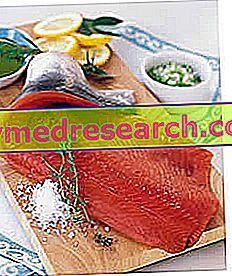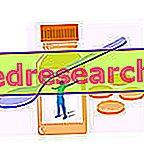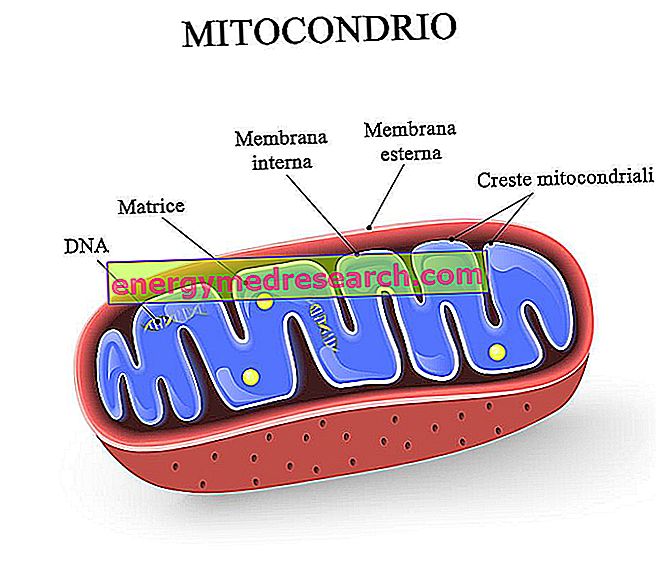Generality
Salmon is a typical fish of some sub-Arctic and arctic areas. However, its breeding can also take place in more southern areas, although it is certainly NOT a characteristic animal of central-southern Europe.

Salmon, intended as a food, belongs to the 1st Basic Food Group. From a nutritional point of view, its consumption is aimed at achieving the recommended rations of: proteins, mineral salts, some B vitamins, vitamin D, vitamin A and essential fatty acids.
In the diet, salmon could be consumed on a "weekly" basis. A portion of 150-250g, at most every 2-3 days, is in fact sufficient to satisfy the basic criteria of a healthy and correct diet. In this regard, it is necessary to specify that it is always advisable to maintain a certain variability of the diet; better, therefore, to avoid consuming only salmon excluding the other fishery products, as it too (like any other food) has aspects that are not entirely positive or controversial.
It should also be added that salmon is a very rich food in fat; therefore, it is recommended to accurately evaluate the portions (which must be related to individual needs) and to avoid, especially in the case of being overweight, its contextualisation in recipes rich in seasoning fats (oil, cream, etc.).
Salmon as Food: How Do You Eat?
Salmon is a food that lends itself to various types of consumption.
In the "fresh state" its flesh is delicate and pleasant (where "fresh" means "NOT worked" with preservation methods other than freezing); there are also other products obtained through alternative systems, among these, the most characteristic is the smoking (accompanied by a slight salting), but today it is also quite common to preserve canned salmon by means of a liquid (brine) . Salmon in the form of paté is less consumed (and less prized).
What many people do not know is that salmon is not consumed only by muscle and fat, which is what is commonly understood as "meat". His eggs, especially in certain places, are considered a real delicacy. Be careful though! Those who expect a more or less "anonymous" taste, similar to that of lumpfish or flying fish eggs, or those accustomed to the delicate taste of Russian caviar, could remain unpleasantly disappointed; in fact, salmon roe is distinguished by a hint of "explosive" of omega 3, so intense as to overpower any other ingredient on the plate. Also certain offal of the salmon seem edible and all in all pleasing to the taste; the liver is certainly the best known. Like the aforementioned organ of cod, verdesca and other cold-sea fish, salmon liver is also very rich in omega 3 and, together with other parts of "waste" in the trade of its meat, is often used for the formulation of food supplements. By itself, salmon liver is a fairly simple product to cook but, being an organ that is highly exposed to certain contaminants, if it is intended for human consumption, it should be made from controlled animals, ignoring instead the creatures bred without respecting the disciplinary.
Returning to salmon meat, we briefly mention the most common recipes in our country which, to be honest, does not boast a real culinary tradition specific to this food. Fresh salmon (also defrosted), especially in recent years, is often incorporated into raw fish recipes. Alone or within more or less exotic mixtures, it is now a fundamental ingredient of Japanese sushi ( sashimi, nigiri, oshizushi, futomaki, etc.), in which it is also possible to combine it with foods that contain eggs ( ikura ). Still raw, salmon meat is suitable for the production of carpaccio or tartare from fresh, smoked or marinated fish. With regard to cooking systems, instead, steam and baking are more widespread, with or without the use of salt crust.
There are two different kinds of smoking, an industrial one (perhaps also of a chemical type, as for some cold cuts), which also includes a first salting and a subsequent vacuum, and another housewife. The latter (see the video recipe) can also be performed inside the home oven; it foresees a slight initial salting and is carried out "cold" (with the oven switched off, into which the steaming wood is inserted), which is why it does not prolong the preservation of the food much. On the other hand, it allows you to customize the taste based on the type of wood used.
As for marinating, there are several different recipes. Some are based on the dehydration of salmon by salting (with a little sugar) and subsequent rehydration in aromatized suspensions (water, citrus juice, herbs, oil, etc.); others directly exploit flavored liquids with an osmotic power much higher than meat (generally with high percentages of sugar and salt), in order to "firm up" the tissues while flavoring them.
However (since it is a raw food to consume) we remind you that before the smoking or marinating it is always necessary to apply the abatement of temperature to avoid any risk of parasitosis.
If fresh meat, smoked or marinated in salmon leaves room for culinary imagination, there is not much to specify with regards to salmon in cans and paté salmon. The latter is often used in the formulation of canapés, snacks, hors d'oeuvres and sandwiches, while the one in a jar perfectly matches dry pasta as a filling for tortelli or as an accompanying sauce.
Quality and Disputes of Salmon in the Diet
Let us now focus on the quality of the raw material available on the market. There are various species of salmon, but in Italy (and also in the rest of Europe) the Atlantic salmon is mainly consumed (binomial nomenclature: Salmo salar ).
Most of the salmon on national banks comes from foreign aquacultures and arrives in Italy as frozen, to be defrosted only before retail sale. There is therefore no valid reason to buy it "at the market" rather than in a freezer counter (where, moreover, it would cost even less). The only detail that REALLY makes the difference between "salmon and salmon" regards the origin, intended as farmed fish or caught fish . Highlighting the fact that the aquacultures are NOT all the same (some are distinguished by the high quality of the feeds and the low population density), it is important to remember that the salmon caught (indeed called "wild") is qualitatively better than the other. Nowadays, the composition of the feed can be varied based on the product to be obtained, also managing the nutritional concentration and the pigments responsible for the coloring of the salmon; the latter feature can also be enhanced by limiting the presence of crustaceans, which are naturally present in the diet of wild salmon (which are very rich in these molecules). In practice, the flesh of these fish could be "colored" by supplementing the feed with type A pro vitamins, a bit like salmon trout. Remember that the latter is NOT a hybrid species, but a rainbow trout with pink meat obtained by feeding the fish with flours particularly rich in carotenoids.
Unfortunately, fishing for wild salmon is NOT sufficient to meet market demand, which is why breeding is completely necessary; nevertheless, this measure also does not preserve the environment from the ecological damage inflicted by the super-demand for salmon. The fish farms, in fact, also require the presence of small fish and crustaceans that are therefore fished, an activity that weakens rather significantly the foundations of the marine food chain.
Role of Salmon in the Diet
Fresh salmon is a product that often appears in diets, regardless of whether or not they are nutritional therapies. As we will see later, however, it is not adaptable to any diet; in fact, due to its high calorific value, it could be contraindicated in the diet of sedentary overweight subjects. Its most interesting dietetic application concerns the diet against metabolic diseases (mainly dyslipidemia and hypertension). This last application is due to the particular nutritional value of salmon, which is distinguished by the richness in essential fatty acids of the omega 3 group (in particular EPA and DHA) and astaxanthin (carotenoid). As is now well known, the lipophilic molecules of the omega 3 group cannot be produced independently by the body, therefore they must necessarily be introduced with the diet. Their metabolic effect (in addition to the energy one) is bivalent: they are precursors of some "good" eicosanoids and constituents of cell membrane; moreover, their presence seems to lower cholesterol, improve the LDL / HDL ratio, lower hypertriglyceridemia, reduce hypertension, fight systemic inflammation, prevent the onset of thrombus to the advantage of cardio-vascular risk and reduce complications related to type 2 diabetes mellitus. Astaxanthin, on the other hand, is a pro vitamin A with an antioxidant and coloring effect; it is the molecule responsible for the pink coloring of salmon meat, which plays a metabolic role in protecting against free radicals and a beneficial cutaneous function towards sun burns.
It is curious to learn that among the various omega 3 supplements there is also the so-called salmon oil (for men and animals). In addition to the well-known chains of essential fatty acids, this orange oil (marketed in collagen beads) is promoted by virtue of the presence of antioxidant astaxanthin and phospholipids (probably obtained from the nervous tissue of fish). The method of extracting salmon oil is little known to the public, but it cannot be excluded that it involves the recycling of certain waste obtained from the marketing of meat.
On the other hand, it should be remembered that salmon falls into the category of fatty fish, therefore it is a food with a high calorific value. This means that any food abuse, constant and significant (perhaps associated with other "questionable" behaviors), could favor the onset of overweight. Let us not forget that among the various causes of the onset of metabolic diseases mentioned above (with reference to the positive effects of omega 3), in addition to individual predisposition, sedentariness and an unbalanced diet, there is also the overweight itself. In light of what has been said so far, it is certainly not difficult to understand why salmon rarely appears in diets against obesity . To be precise, this food could be contextualized in a more or less effective way also in these nutritional schemes, having however the foresight to reduce the oil from overall seasoning; however, respecting the criterion of "applicability" of the portions (that is, at least sufficient weights to give a sense of satiety), inserting the salmon in the diet of a sedentary subject would become quite complicated and not always justifiable.
Let's not forget also that salmon is a food rich in high biological value proteins, or rather with a pool of essential amino acids rather good and in considerable quantities; this aspect is particularly appreciated by sportsmen and bodybuilders.
As far as mineral salts are concerned, salmon meat is fairly rich in iron, potassium and phosphorus, while as far as vitamins are concerned, pro vitamin A (Astaxanthin), vitamin D (Colecalciferol), vitamin PP ( Niacin) and vitamin B1 (Thiamine).
For subjects without complications, the salmon is always very pertinent in the diet and in any form, while for pregnant women it is necessary that it is cooked to further avoid the risk of microbiological contamination.



